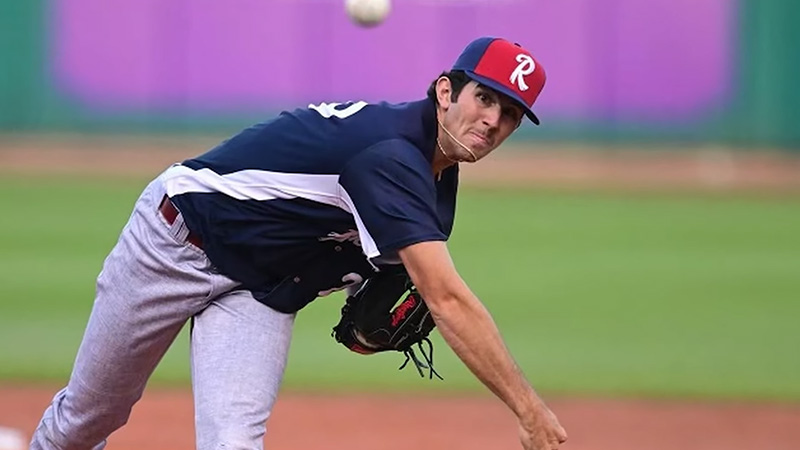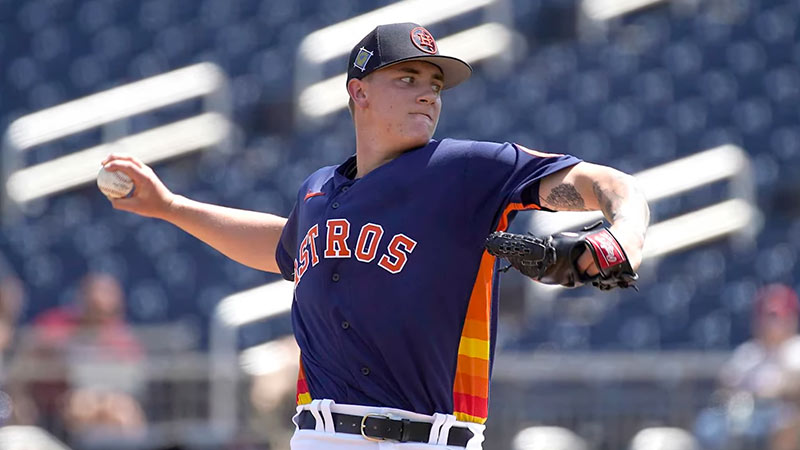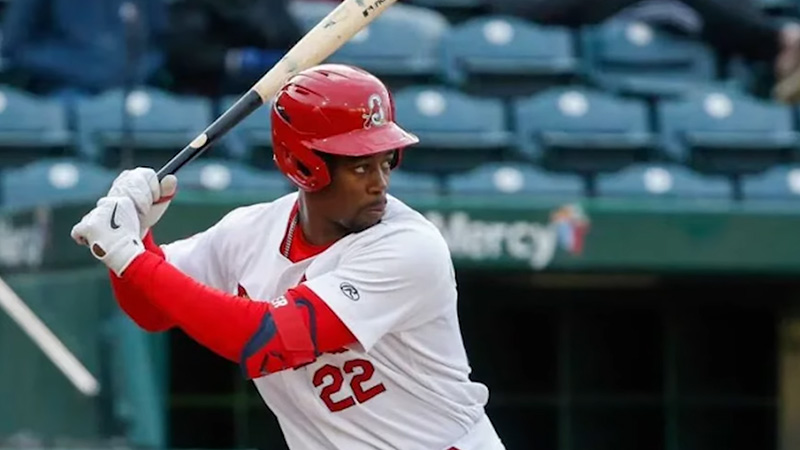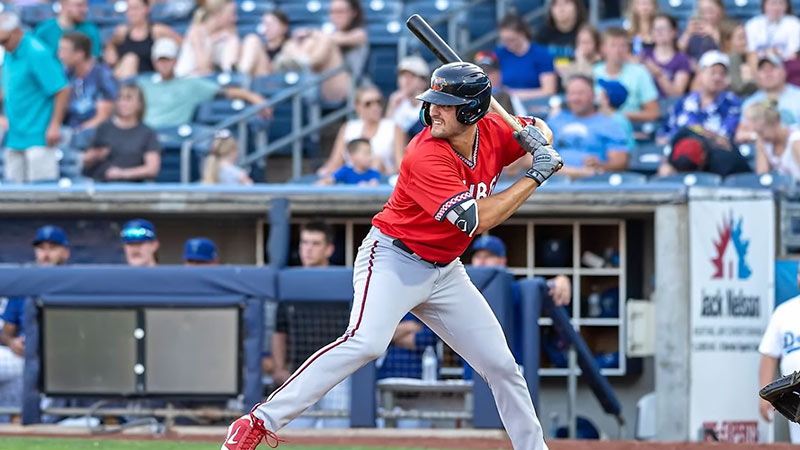In an ongoing effort to streamline the pace and strategy of Major League Baseball (MLB) games, the introduction of the Three-Batter Minimum Rule has significantly impacted pitching strategies.
This rule requires pitchers to face a minimum of three batters or complete an inning before being replaced.
In this comprehensive blog post, we delve into the intricacies of the Three-Batter Minimum Rule in baseball, exploring its implications, penalties for violations, and its historical evolution. So, stay focused and have a nice time ahead.
What Is the Baseball Three-Batter Minimum Rule?
The Three-Batter Minimum Rule in baseball was implemented to reduce the number of pitching changes and bring more consistency to the pace of play.
According to the rule, once a pitcher enters a game, they must face a minimum of three consecutive batters or complete the inning before being replaced, unless certain exceptions apply.
Exceptions to the Three-Batter Minimum Rule
While the Three-Batter Minimum Rule applies in most cases, there are a few exceptions where a pitcher can be substituted before facing three batters.
These exceptions include instances where a pitcher suffers an injury or illness that prevents them from continuing, or when the inning ends before the pitcher completes the minimum requirement.
Impact on Pace and Flow of Play
The Three-Batter Minimum Rule aims to address the issue of frequent pitching changes, which can contribute to longer game durations. By reducing the number of pitching changes, the rule helps maintain the flow and rhythm of the game, resulting in a more streamlined and engaging experience for players and fans alike.
Strategic Considerations and Adjustments
The implementation of the Three-Batter Minimum Rule has brought about strategic considerations for managers and pitchers. Managers must carefully assess pitching matchups, anticipate potential challenges, and make decisions that optimize their team’s performance within the confines of the rule.
Pitchers, in turn, must adapt their approach, focusing on their ability to retire multiple batters effectively and efficiently.
Impact on Specialist Pitchers
The Three-Batter Minimum Rule has had a significant impact on specialist pitchers, commonly known as “lefty specialists” or “LOOGYs” (Left-Handed One Out GuYs).
These pitchers were often brought in for short appearances to face a single left-handed hitter, utilizing their specific skills against favorable matchups.
With the new rule, the usage of specialist pitchers has become more limited, prompting adjustments in team strategies and roster composition.
Baseball Three-Batter Minimum Rule in MLB

The Three-Batter Minimum Rule applies to Major League Baseball (MLB) and has become a standard regulation in the league.
It is designed to eliminate excessive pitching changes, enhance the competitive balance between pitchers and batters, and mitigate the impact of left-handed specialists, commonly known as LOOGYs (Left-handed One-Out Guys).
Enhancing Pace and Flow of Play
One of the primary objectives of the Three-Batter Minimum Rule is to enhance the pace and flow of play in baseball. By limiting the number of pitching changes, the rule seeks to minimize interruptions in the game, reduce idle time, and maintain a more consistent rhythm on the field.
This can help to keep fans engaged, prevent excessive game durations, and create a more exciting and dynamic experience.
Competitive Balance and Strategic Considerations
The Three-Batter Minimum Rule also aims to address the strategic advantages gained by teams through frequent pitching changes.
In the past, managers would often deploy left-handed specialists to face only one or two left-handed batters, taking advantage of platoon advantages.
This strategy, while effective, led to extended breaks in the game and disrupted the flow. The rule aims to level the playing field by requiring pitchers to face a minimum of three batters, regardless of their handedness.
Exceptions to the Rule
While the Three-Batter Minimum Rule is generally enforced, there are a few exceptions to accommodate certain situations.
These exceptions include cases where a pitcher sustains an injury or illness during an at-bat, pitchers who face the end of an inning or game, and pitchers who are removed due to disciplinary actions.
These exceptions allow for necessary flexibility while maintaining the overall integrity of the rule.
Impact on Left-Handed Specialists
The implementation of the Three-Batter Minimum Rule has had a notable impact on left-handed specialists, often referred to as LOOGYs.
These pitchers were primarily used to exploit platoon advantages against left-handed batters but were frequently substituted after facing just one or two hitters.
With the new rule, teams need to reconsider their bullpen strategies, as LOOGYs are required to face multiple batters, making their usage less prevalent.
Situations When the Three-Batter Minimum Rule is Applied

The Three-Batter Minimum Rule in baseball is typically applied when a relief pitcher enters the game. The rule states that the pitcher must face a minimum of three batters or complete the inning unless they become injured or ill.
This rule was implemented to address the strategy of matchup-based pitching changes and reduce the overall length of games.
Relief Pitcher Entry
The Three-Batter Minimum Rule comes into effect when a relief pitcher is called upon from the bullpen to replace the current pitcher. Once the new pitcher takes the mound, they are required to face a minimum of three consecutive batters or complete the inning.
Mid-Inning Situations
The rule is enforced even in mid-inning situations. If a relief pitcher is brought in with less than three outs remaining in the inning, they are still required to face a minimum of three batters or complete the inning, unless they become injured or ill.
Exceptions to the Rule
The Three-Batter Minimum Rule does not apply if the relief pitcher faces the end of the half-inning before facing three batters. For example, if the pitcher retires the side by getting the final out before facing three batters, they are not required to continue pitching into the next inning.
Inherited Runners
When a relief pitcher enters the game with inherited runners on base, they are not exempt from the Three-Batter Minimum Rule. The pitcher must still face a minimum of three batters or complete the inning, regardless of the situation they inherited.
Injury or Illness
The Three-Batter Minimum Rule includes provisions for pitchers who become injured or ill during their appearance. If a pitcher sustains an injury or falls ill and is unable to continue pitching, they can be replaced without facing the three-batter minimum requirement.
Penalties For Breaking Baseball Three-Batter Minimum Rule
Failure to adhere to the Three-Batter Minimum Rule without a valid reason can result in a violation and potential penalties. The most common penalty is an automatic ball awarded to the batter when the pitcher is removed prematurely.
This penalty serves as a deterrent to discourage managers from making frequent pitching changes solely for matchup advantages.
Automatic Ball
When a manager removes a pitcher before they have faced three batters without a legitimate reason, such as an injury or illness, the opposing team is awarded an automatic ball. This is considered a penalty against the pitching team and can potentially affect the count and the outcome of the at-bat.
Consequences for Repeated Violations
If a manager consistently violates the Three-Batter Minimum Rule, further consequences may be imposed. This can include fines or disciplinary action against the manager or pitching coach, as determined by the league or governing body.
Ejection
In extreme cases of repeated violations or blatant disregard for the rule, the manager or pitching coach may be ejected from the game.
Ejections serve as a strong disciplinary measure to enforce compliance with the Three-Batter Minimum Rule and maintain the integrity of the game.
It’s important to note that the specific penalties for breaking the Three-Batter Minimum Rule may vary depending on the league or level of play.
Significance of Baseball Three-Batter Minimum Rule
The Three-Batter Minimum Rule in baseball has brought about several significant benefits to the game, impacting the pace of play, strategic decisions, and balance between pitchers and batters.

Enhancing the Pace of Play
One of the primary reasons for implementing the Three-Batter Minimum Rule was to address the issue of extended game durations caused by frequent pitching changes.
By requiring pitchers to face a minimum of three batters or complete the inning, the rule reduces the number of interruptions and delays resulting from constant bullpen switches.
This enhances the overall pace of play, keeping fans engaged and minimizing downtime during games.
Eliminating the Specialist Role
Before the introduction of the Three-Batter Minimum Rule, teams often relied on specialized relief pitchers known as “lefty specialists” or “righty specialists” to face only one or two batters of opposite handedness.
This practice allowed teams to exploit matchups and gain an advantage in specific situations. However, it often led to lengthy pitching changes and disrupted the flow of the game.
The Three-Batter Minimum Rule eliminates this specialist role, promoting a more streamlined and efficient game.
Fostering Strategic Approaches
The Three-Batter Minimum Rule has encouraged teams and managers to adopt a more strategic approach to pitching decisions.
With the restriction on frequent pitching changes, managers must carefully consider the matchups and potential consequences of leaving a pitcher in to face multiple batters.
This rule forces managers to evaluate the skills and versatility of their pitchers, fostering a deeper understanding of their strengths and weaknesses.
It also adds a layer of complexity to the game, as managers must strategically navigate through innings, weigh bullpen depth, and anticipate future matchups.
Balancing Pitchers and Hitters
The implementation of the Three-Batter Minimum Rule aims to level the playing field between pitchers and hitters. Specialized pitchers who were primarily brought in to exploit favorable matchups often gave an advantage to the pitching team.
However, this rule ensures that batters face a greater variety of opponents, increasing the challenge and unpredictability of at-bats.
Hitters are no longer able to solely focus on hitting against pitchers with certain weaknesses or vulnerabilities, creating a fairer and more balanced competition between the two sides.
History of Baseball Three-Batter Minimum Rule
The introduction of the Three-Batter Minimum Rule is a relatively recent development in baseball strategy and rules.
Evolution and Implementation
The Three-Batter Minimum Rule was first implemented in Major League Baseball (MLB) during the 2020 season. It was introduced as part of MLB’s ongoing efforts to improve the pace of play and streamline the game.
The rule was designed to address concerns about excessive pitching changes, extended game durations, and the impact on the overall viewing experience for fans.
Rationale and Impact
MLB officials and executives believed that limiting the number of pitching changes would lead to a more engaging and fast-paced game.
By reducing the time spent on mound visits, warm-up tosses, and pitching changes, the league aimed to maintain the flow and rhythm of the game, keeping fans captivated throughout.
Player and Team Adjustments
The implementation of the Three-Batter Minimum Rule required adjustments from both players and teams. Pitchers needed to adapt their approaches, focusing on developing a wider repertoire of pitches and refining their skills against batters of various handedness.
Teams also had to reconsider their bullpen management strategies, identifying pitchers capable of effectively facing both right-handed and left-handed hitters.
FAQs
Are there any exceptions to the Three-Batter Minimum Rule?
Yes, there are a few exceptions to the Three-Batter Minimum Rule. A pitcher may be exempt if they become injured or fall ill during their appearance, or if they finish the half-inning before facing three batters.
How does the Three-Batter Minimum Rule impact bullpen management?
The Three-Batter Minimum Rule significantly affects bullpen management strategies. Managers must carefully consider matchups, anticipate potential scenarios, and optimize their pitching staff’s usage to comply with the rule while maximizing effectiveness.
Can a pitcher intentionally walk a batter to avoid facing three batters?
No, intentional walks do not exempt a pitcher from the Three-Batter Minimum Rule. If a pitcher intentionally walks a batter and is removed from the game, the new pitcher must still face a minimum of three batters or complete the inning.
Does the Three-Batter Minimum Rule apply to starting pitchers?
No, the Three-Batter Minimum Rule only applies to relief pitchers. Starting pitchers are not subject to this rule, allowing them to be substituted at any point in the game without facing a minimum number of batters.
What impact has the Three-Batter Minimum Rule had on the game?
The Three-Batter Minimum Rule has fundamentally changed pitching strategies. It has reduced the number of specialist pitchers, increased the importance of versatility in bullpen arms, and added a new layer of tactical decision-making for managers.
Bottom Line
The implementation of the Three-Batter Minimum Rule in baseball has transformed pitching strategies and contributed to the overall pace and competitiveness of the game.
By limiting the number of pitching changes, this rule fosters a more strategic approach while ensuring a fairer matchup between pitchers and batters.
As baseball continues to evolve, the Three-Batter Minimum Rule remains a significant factor shaping the dynamics of the sport, showcasing the ongoing efforts to enhance the fan experience and maintain the integrity of the game. Best of luck.







